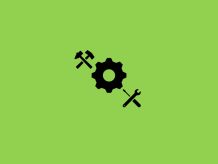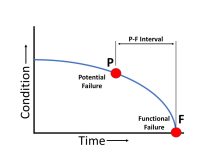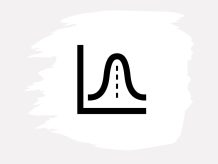Brushless Motor Technology in Power Tools | Gimmick or Worth it?
The use of DC brushless motor in power tools is becoming increasingly popular where different brands boast about it in their marketing brochures and landing pages. While in theory, DC brushless motors are more efficient than brushed motors, it is yet to be established if the advantages of brushless motors really make a difference in power tools.
In today’s post, we find the tangible advantages of brushless motors over their brushed counterparts in power tools. We will discuss history of brushless motors and their use in power tools industry. We’ll look at the price differences between brushless and brushed equivalents as well as compare both technologies in technical parameters such as battery time and performance.
A Brief History of Brushless DC Motors
The invention of the brushless DC motor is traced back to a paper published in Volume 81, Issue 11th November, 1962 of IEEE (Institution of Electrical and Electronics Engineers) by T. G. Wilson and P. H. Trickey named “D-C machine with solid-state commutation”.
The paper discusses the factors involved in commutation in DC motors and experiments with a solid state (electronic) means for it by eliminating the conventional mechanical commutator and brushes. The experimental machine was shown to be fit for use as a brushless DC motor as well as DC to AC invertor driving a small servomotor. The solid state (brushless) means of commutation so invented and presented in the paper, and tested to 5,000 RPM, proved itself to be practical and feasible.
Over the years, brushless DC motors found their use in computer electronics including hard disk drives and computer fans. As industry improved in making manufacturing of electronic components more and more cost effective, brushless DC motors found their way into other industries as well. The same trend carried on into power tools industry after the year 2000.
History of Brushless DC Motors in Power Tools
The first use of brushless motors in power tools in traced to Makita when it developed brushless power tools for defense and aerospace industries in 2004. Moving forward, Makita released 18V brushless impact driver in 2009 for contractor use.
Milwaukee launched its M18 Fuel series of 18V brushless power tools in 2012. Dewalt introduced its 20V MAX series of brushless power tools in 2013 with XR line of cordless screw drivers boasting improved efficiency and runtime.
All of the other power tool brands including Skil, Ryobi, Rigid and Bosch caught up and introduced their line of brushless power tools. As of today, all popular power tool brands have at least one series of brushless power tools in their product line.
Price Difference of Brushless Tools
(the rate analysis is based on February, 2021 prices)
Brushless tools are always expensive than their brushed counterparts because of the more sophisticated solid state technology involved in them.
For example, DEWALT 20V Max Reciprocating Saw Model DCS387B (Brushed) costs $104 while its brushless equivalent DEWALT 20V MAX XR Reciprocating Saw Model DCS367B costs $169 - a price difference of more than $60.
Similarly, DEWALT 1/2 Inch 20V MAX Cordless Drill Model DCD708C2 (Brushed) costs $125 while DEWALT 1/2 Inch 20V MAX XR Cordless Drill Model DCD791P1 (Brushless) costs $140 - a price difference of over $15.
Dewalt 20V Max Cordless Drill Driver & Impact Driver Combo (Brushed) costs $156 while Dewalt 20V Max XR Cordless Drill Driver & Impact Driver Combo (Brushless) costs $199 – a $43 price difference.
The same trend is also observed in other brands such as Milwaukee 1/4" Hex Shank Impact Driver Model M12 2462-20 (Brushed) with a capacity of 1,000 in-lbs. costs around $50 while Milwaukee 1/4" Hex Shank Impact Driver Model MLW2553-20 M12 Fuel (Brushless) with a capacity 1,300 in-lbs. costs around $90 - a price difference of $40.
Makita’s 6-1/2” 18V LXT Cordless Circular Saw Model XSS02Z (brushed) costs $130-150 while Model XSH03Z 18V LXT (brushless) costs around $200 – a price difference of $50-80.
In short, no matter what brand you take, brushless power tools will always be around at least $50 more expensive on an average than their brushed counterparts due to the inherent complexity of brushless commutation.
Advantages of Brushless Motors in Power Tools
Now that we have looked into the history of brushless DC motors; their use in power tools industry and the average price difference from their brushed counterparts, it is time that we look at the advantages brushless motors can offer.
Weight Comparison of Brushless vs. Brushed Tools
We’ll start with a misconception that brushless tools are always lighter in weight than their brushed counterparts because brushless DC motors have greater power to weight ratio. Let us test this theory with some practical examples.
Dewalt DCS387B is a brushed reciprocating saw with a stroke length of 1-1/8” and maximum speed of 2,900 strokes per minute. It weighs 5.0 lbs. Its brushless equivalent, the Dewalt DCS367B with the same stroke length and maximum speed is not any lighter in weight. It also weighs 5.0 lbs.
Similarly, Milwaukee 2606-20 1/2” Drill Driver is a brushed tool with a torque capacity of 500 in-lbs. and speed up to 1,800 RPM. It weighs 2.9 lbs. Its brushless equivalent, the Milwaukee 2701-20 has the same torque and speed capacity, and weighs 2.8 lbs. – a negligible weight difference.
Makita’s 6-1/2” 18V LXT Cordless Circular Saw Model XSS02Z (brushed) weighs 7.3 lbs. and runs at a speed of 3,700 RPM. Its brushless counterpart, model XSH03Z 18V LXT, weighs exactly the same but does reach 5,000 RPM.
If we take another example of track saws, we’ll find that Makita XPS01PTJ (Brushless) weighs 11.2 lbs. with a maximum cutting speed of 6,300 RPM and Dewalt DCS520T1 (Brushless) weighs 12.5 lbs. with a maximum speed of 4,000 RPM. Both have 6-1/2” blade size. In comparison, Makita SP600J1, a brushed tool, runs at 5,200 RPM but weighs merely 9.7 lbs. Festool TS 75 EQ F Plus has a massive 8-1/4” blade size with a maximum speed of 4,400 RPM but weighs 13.6 lbs. – yes it is heavier but not proportionate to the size difference.
To conclude, it is true that brushless DC motors have greater power to weight ratios than their brushed counterparts and we saw that with Makita XSH03Z that reaches higher speed at same weight, however, an overall assessment of various brushless and brushed models shows that this weight advantage is not present across the board. Brushless power tools are not always lighter in weight than their brushed counterparts.
Effect of Brushless Technology on Battery Life
The area where brushless motors have the most effect is the battery life. A brushless tool is expected to last at least 25% more than its brushed counterpart. In a brushed motor, brushes constantly rub against commutator producing heat due to friction. Elimination of brushes takes away all the frictional forces that a motor experiences with brushes and allow the motor to run cooler. A cooler motor draws less power from the battery to produce the same amount of mechanical work and therefore gets more work done on a single battery charge.
For a practical demonstration, check out comparison of brushed and brushless Rigid 18V drill drivers where the manufacturer claims the brushless design lasts 50% longer than the brushed counterpart, however, in a practical test, brushless design got almost twice as much work done on the same battery charge as its brushed counterpart.
(Video Credit: “Nate Large - Woodworking DIY & More” YouTube Channel)
Brushless vs. Brushed Performance
A brushless tool will generally pack more punch than its brushed counterpart in terms of performance. For example, Dewalt DCD780B drill driver is a brushed tool with 1/2” chuck size, two speed settings (600/2,000 RPM), 15 clutch settings and delivers a power of 350 Watts. Dewalt DCD791B is its brushless counterpart with the same chuck size, speed and clutch settings, however, delivers 460 Watts of power – 110 Watts more than the brushed model.
Similarly, if we look at Makita XSS02Z brushed cordless circular saw with a 6-1/2” blade, it runs at a maximum speed of 3,700 RPM. The Makita XSH03Z, its brushless counterpart, with the same blade size runs up to 5,000 RPM – 1,300 RPM more than the brushed model.
The same trend is also observed when comparing Rigid 18V 1/2” Impact Wrench Model R86010B (Brushed model) with Rigid R86011B (Brushless). The brushed model has torque capacity of 325 ft-lbs. and 3,200 impacts per minute while the brushless successor has torque capacity of 485 ft-lbs. in forward direction and 620 ft. lbs. in reverse direction with 3,500 impacts per minute. The improved performance is achieved at a lower overall speed as the brushed model maximum motor speed is 2,900 RM while the brushless model runs at 2,600 RPM maximum.
However, there are some exceptions to this trend as well. For example, Milwaukee drill driver (brushed) model 2606-20 produces 500 in-lbs. of torque and runs at two speed settings of 400 and 1,800 RPM. Its brushless counterpart, the 2701-20 has the same torque and speed capacities. The advantage in this case is the longer battery life for same power and performance.
In another great example, drill drivers from Makita BHP454 (Brushed) and Dewalt DCD985 (Brushed) are tested against Milwaukee Fuel 2604 (Brushless) in a controlled test environment drilling through the same material with same method and Milwaukee’s brushless model not only drills more on the same charge, but also drills faster as demonstrated in below video.
(Video Credit: “Bailey Line Road” YouTube Channel)
Noise and Vibration Comparison
Brushless motors run quieter than brushed motors because the constant noise produced by carbon brushes rubbing against commutator is removed. However, the magnitude of this effect in power tools is not so much noticeable across the board. While some brushless tools can run noticeably quitter than their brushed counterparts, however, it is not a universal observation.
For example, Dewalt DCS387B reciprocating saw (brushed) has quite a few noise and vibration complaints. In its brushless counterpart Dewalt DCS367B, you’d expect drastic noise and vibration reduction, however, what you find are the same noise and vibration complaints.
Similarly, there is positive feedback with regards to quiet operation of Makita XSH03Z circular saw (brushless) which you would expect from a brushless model. However, similar positive feedback is also found for Makita XSS02Z (brushed) model.
The important factor to understand here is that in power tools, noise and vibration are dependent on multiple variables and not just the motor brushes. While elimination of motor brushes reduces noise, but the question remains if the noise reduction is of such magnitude that it could create a noticeable difference such that when you hold a brushless tool, you could tell just by running it that it is brushless due to its less noise and vibration. That is not the case in most tools.
Are Brushless Power Tools Worth the Money?
In the end, it all comes down to one point that whether or not brushless power tools are worth the money. As far as we have compared the two technologies, we believe brushless tools are definitely worth the money because they provide greater runtime on a single charge and an overall better performance.
If you like our post and the information we have presented, please do give your valuable feedback and share this article with your friends.
Other Tool Reviews You Might Like

brizy_dc_post_title
Learn about Autonomous Maintenance - part of Total Productive Maintenance that empowers machine operators in basic maintenance tasks.

brizy_dc_post_title
Learn what is RAMS - acronym of Reliability, Availability, Maintainability & Safety/Supportability - in industrial maintenance.

brizy_dc_post_title
We explain what is the supposed role of Maintenance Planning Department in industry. We clear misconceptions and give do's and don'ts.

brizy_dc_post_title
Explaining 6 industrial maintenance types: Preventive, Reactive, Corrective, Predictive, Proactive and Reliability Centered Maintenance.

brizy_dc_post_title
Practical aspects of PF Curve and PF Interval in maintenance & reliability explained. Learn what's the most important question in PF interval?

brizy_dc_post_title
The practical application of ABC classification of inventory for maintenance spare parts with examples from different industries.

brizy_dc_post_title
We explain the concept of Inherent Reliability - A metric used in industrial maintenance and reliability management.

brizy_dc_post_title
Intuitive explanation of Achieved Availability - Metric used in Industrial Maintenance & Reliability Management.

brizy_dc_post_title
Learn about Autonomous Maintenance - part of Total Productive Maintenance that empowers machine operators in basic maintenance tasks.

brizy_dc_post_title
Learn what is RAMS - acronym of Reliability, Availability, Maintainability & Safety/Supportability - in industrial maintenance.

brizy_dc_post_title
We explain what is the supposed role of Maintenance Planning Department in industry. We clear misconceptions and give do's and don'ts.

brizy_dc_post_title
Explaining 6 industrial maintenance types: Preventive, Reactive, Corrective, Predictive, Proactive and Reliability Centered Maintenance.

brizy_dc_post_title
Practical aspects of PF Curve and PF Interval in maintenance & reliability explained. Learn what's the most important question in PF interval?

brizy_dc_post_title
The practical application of ABC classification of inventory for maintenance spare parts with examples from different industries.

brizy_dc_post_title
We explain the concept of Inherent Reliability - A metric used in industrial maintenance and reliability management.

brizy_dc_post_title
Intuitive explanation of Achieved Availability - Metric used in Industrial Maintenance & Reliability Management.